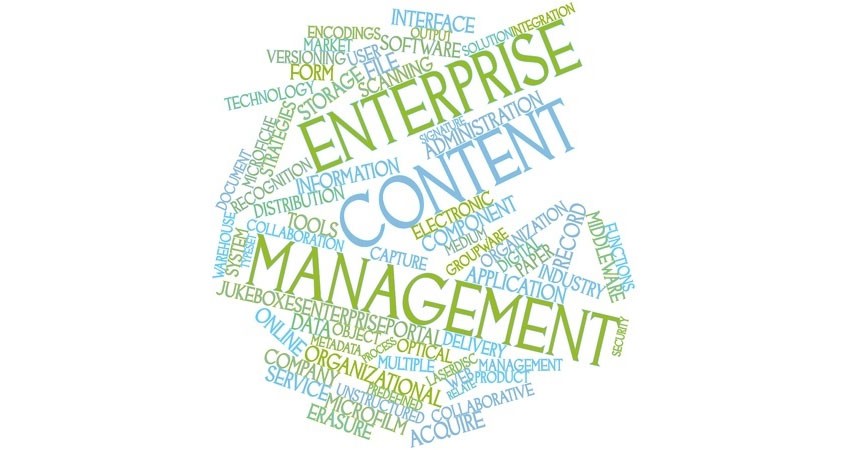To be able to deliver in time, business users today need the right information at the right time in the right format that minimizes their effort to search, repurpose content as required and make effective decisions in a timely manner. Several organizations are struggling with a deluge of information coming in both from their business systems both within and outside their enterprise. OpenText Enterprise Content Management helps you to manage the entire lifecycle of information across the enterprise – from creation and management, to storage, distribution, archiving and ultimately disposition while ensuring that security policies are respected and regulatory compliance is adhered to. ECM unites document and records management, email management, content archiving, search, contracts management and other information governance capabilities to maximize business insight while minimizing organizational risks.
In definitive terms, Enterprise Content Management (ECM) is a formalized means of organizing and storing an organization’s documents, and other content, that relate to the organization’s processes. The term encompasses strategies, methods, and tools used throughout the lifecycle of the content.
ECM is an umbrella term covering document management, Web content management, search, collaboration, records management, digital asset management (DAM), workflow management, capture and scanning. ECM is primarily aimed at managing the life-cycle of information from initial publication or creation all the way through archival and eventually disposal. ECM applications are delivered in three ways: on-premise software (installed on the organization’s own network), software as a service (SaaS) (Web access to information that is stored on the software manufacturer’s system), or a hybrid solution composed of both on-premise and SaaS components.
ECM aims to make the management of corporate information easier through simplifying storage, security, version control, process routing, and retention. The benefits to an organization include improved efficiency, better control, and reduced costs. For example, many banks have converted to storing copies of old checks within ECM systems as opposed to the older method of keeping physical checks in massive paper warehouses. Under the old system, a customer request for a copy of a check might take weeks, as the bank employees had to contact the warehouse where the right box, file, and check, would need to be located. The check would then need to be pulled, a copy made and mailed to the bank where it would finally be mailed to the customer. With an ECM system in place, the bank employee simply queries the system for the customer’s account number and the number of the requested check. When the image of the check appears on screen, the bank is able to mail it immediately to the customer, usually while the customer is still on the phone.
Extended ECM
Large Enterprises or Government agencies invest in Enterprise applications to standardize their core business processes (Eg. SAP ERP, CRM, SCM). However, several processes are in fact triggered by or generate unstructured information such as email, technical documentations, contracts, photos, résumés, product specifications, and much more. Close to 80% of enterprise information is in unstructured format.
In many enterprises, the worlds of structured business processes and unstructured content exist in isolation from one another. This leads to business users spending inordinate amounts of time searching for misplaced content or recreating it entirely. Additionally, this has an impact in the form of slower decision making leading to ultimately higher costs or loss of revenues.
Enterprise Content Management (ECM) applications offers numerous services to help users create, collaborate on, share, store, archive, and eventually destroy this content. However ECM should not exist in isolation as this does not allow content to be seen in the context of business processes managed in SAP ERP. OpenText Extended ECM (xECM) for SAP bridges this gap between ECM and SAP Business Suite applications. It provides a deep and seamless integration between these two worlds to bring unstructured and structured data together in way that has never been done before.
Avaali helps organizations significantly improve productivity and meet regulatory requirements by ensuring full visibility into both data and content related elements of a business process. Our consultants have a deep understanding of best practices as a result of implementing similar solutions for several global accounts. Avaali provides advisory services, implementation and support services to support the unique business process requirements of complex, global enterprises.
To know more, visit here.

